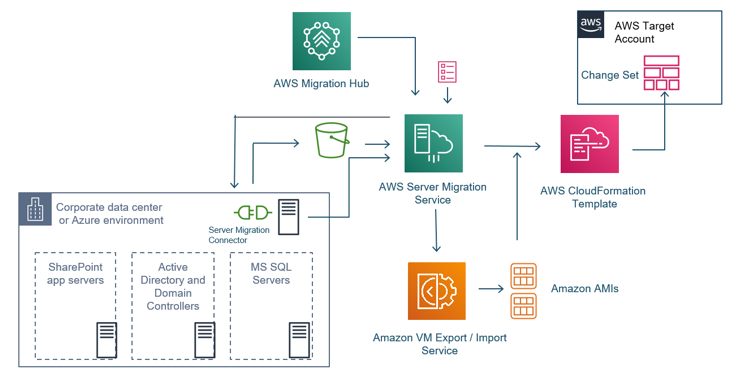AWS Compute Blog
Category: Migration & Transfer Services
Migrating your on-premises workloads to AWS Outposts rack
This post is written by Craig Warburton, Senior Solutions Architect, Hybrid. Sedji Gaouaou, Senior Solutions Architect, Hybrid. Brian Daugherty, Principal Solutions Architect, Hybrid. Migrating workloads to AWS Outposts rack offers you the opportunity to gain the benefits of cloud computing while keeping your data and applications on premises. For organizations with strict data residency requirements, […]
Architecting for DR on AWS Outposts with CloudEndure
April 19, 2024: This post is considered deprecated. Updated guidance can be found at Architecting for Disaster Recovery on AWS Outposts Racks with AWS Elastic Disaster Recovery. This post is written by Scott Howe – Sr. Secure Hybrid Edge Solutions Architect and Schneider Larbi – Sr. Partner Solutions Architect (VMware & Outposts) AWS Outposts is a […]
Federating CloudEndure access with Microsoft Azure Active Directory
In this post, you learn how to grant Azure Active Directory users Single Sign-On access to the CloudEndure console. You can now create multiple enterprise applications for different CloudEndure accounts. You can use the guide in this post to assign CloudEndure projects or accounts to users.
Migrating a SharePoint application using the AWS Server Migration Service
This post is contributed by Ashwini Rudra, Solutions Architect; Rajesh Rathod, Sr. Product Manager; Vivek Chawda, Senior Software Engineer, EC2 Enterprise Many AWS customers are migrating on-premises SharePoint workloads to AWS for greater reliability, faster performance, and lower costs. While planning the migration, customers are looking for tools and methodologies that reduce the time to […]
Use MAP for Windows to Simplify your Migration to AWS
There’s no question that organizations today are being disrupted in their industry. In a previous blog post, I shared that such disruption often accelerates organizations’ decisions to move to the cloud. When these organizations migrate to the cloud, Windows workloads are often critical to their business and these workloads require a performant, reliable, and secure […]
Automating your lift-and-shift migration at no cost with CloudEndure Migration
This post is courtesy of Gonen Stein, Head of Product Strategy, CloudEndure Acquired by AWS in January 2019, CloudEndure offers a highly automated migration tool to simplify and expedite rehost (lift-and-shift) migrations. AWS recently announced that CloudEndure Migration is now available to all customers and partners at no charge. Each free CloudEndure Migration license provides 90 […]
Learn about hourly-replication in Server Migration Service and the ability to migrate large data volumes
This post courtesy of Shane Baldacchino, AWS Solutions Architect AWS Server Migration Service (AWS SMS) is an agentless service that makes it easier and faster for you to migrate thousands of on-premises workloads to AWS. AWS SMS allows you to automate, schedule, and track incremental replications of live server volumes, making it easier for you […]
Migrating a multi-tier application from a Microsoft Hyper-V environment using AWS SMS and AWS Migration Hub
This post courtesy of Shane Baldacchino, AWS Solutions Architect Many customers ask for guidance to migrate end-to-end solutions running in their on-premises data center to AWS. This post provides an overview of moving a common blogging platform, WordPress, running on an on-premises virtualized Microsoft Hyper-V platform to AWS, including re-pointing the DNS records associated to […]
Measuring the throughput for Amazon MQ using the JMS Benchmark
NOTE: September 4, 2024 – This post is now considered deprecated and replaced by this newer post “Measuring Amazon MQ throughput using Maven 2 benchmark and AWS CDK“ This post is courtesy of Trevor Dyck, Sr. Product Manager, AWS Messaging, and Alan Protasio, Software Development Engineer, Amazon Web Services Just like compute and storage, messaging […]
Integrating Amazon MQ with other AWS services via Apache Camel
This post courtesy of Massimiliano Angelino, AWS Solutions Architect Different enterprise systems—ERP, CRM, BI, HR, etc.—need to exchange information but normally cannot do that natively because they are from different vendors. Enterprises have tried multiple ways to integrate heterogeneous systems, generally referred to as enterprise application integration (EAI). Modern EAI systems are based on a […]








